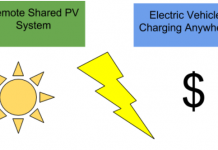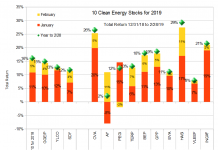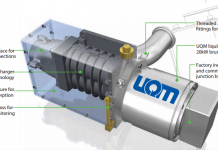Although the writing has been on the wall for some time now regarding Obama’s willingness to move aggressively on the environment file, few expected his first substantive move to have to do with vehicle fuel economy. On Monday, the President requested that the EPA reassess its earlier decision (taken when the Bush administration was still in power) to deny California the right to set and enforce its own fuel economy and car emissions standards above and beyond those set at the federal level.
Not only are California’s standards much tougher than the current federal ones (the state is seeking 42.5 miles per gallon by 2020 vs. 35 at the Federal level, a nearly 22% difference), but 16 other states plan on eventually following suit, together accounting for at least 50% of all cars sold in the US. Unsurprisingly, the auto industry, which is currently contending with a complete collapse in demand, isn’t impressed.
While this move might seem counterproductive at a time when the government is expending vast sums of money trying to salvage domestic car companies, it is actually very much in line with two of Obama’s defining features – namely that (1) he is concerned with weaning the US off foreign oil and tackling climate change and (2) he believes that regulation can be a force for good. How does the latter point work? Let’s go through the main arguments.
First, take the dramatic increase in gasoline prices that occurred over the past few years. There is no doubt that the scale and rate of the rise in energy costs, which far outpaced workers’ ability to obtain matching wage increases, left many households feeling significantly poorer, potentially having acted as one of the triggers to this recession. Petroleum accounted for about 39% of primary energy consumption in the US in 2007, the single largest category. A serious push toward raising fuel efficiency can be thus be seen as a means of lessening the blow from a sudden and sustained rise in petroleum costs, something that will almost certainly happen again.

A related argument in favor of fuel economy regulation looks not so much at the negative wealth effect of expensive oil, but rather at the massive transfer of wealth from North American households to potentially-hostile countries that occurs under such a scenario (the US imports about $5.7 billion worth of oil each week). Sure, imposing standards that are ahead of what industry can meet given its current technological capabilities and operational configuration (a claim that is questionable if not spurious, at least on the technological capabilities front) creates a transfer of wealth, except this time the money flows to companies that are overwhelmingly not based in hostile nations and that often pay taxes here. In an environment where expensive oil is likely to become the norm, the wealth transfer will occur one way or another – it’s about deciding where the money flows to.
Lastly, there is the view that regulation can have positive economic impacts by encouraging innovation and spurring job creation. The German Renewable Energy Law is an example. By mandating outcomes rather than means, government lets the market choose the most efficiency path to get there. Under a best-case scenario, the innovations made along the way become commercial and export success stories. After all, the global trend toward greater fuel efficiency will intensify in the years ahead, and a continuation of the US government’s complete aversion toward raising fuel economy standards (helped of course by a healthy dose of whining from Detroit every time the topic comes up for debate) would play right in the hands of the Big Three’s competitors.
While the arguments presented above will sound preposterous to many individuals, investors with an interest in alternative energy need to understand that this is in fact the stance that will prevail in Washington for at least the next four years. It will feel a little strange at first given how out-of-favor this worldview has been over the past eight years, but soon people will realize that this is the norm rather than the exception, and that interesting opportunities are emerging as a result. It is therefore important to start looking beyond the current bailout package toward where the Obama administration will go on the regulatory front when the storm has passed. In my view, Monday’s announcement provides a good prelude, and tougher fuel economy targets could be on their way at the federal level before too long.
Fuel Efficiency & Emissions Control
There are two main ways to control car emissions and increase fuel economy: (1) make incremental improvements to existing technologies (e.g. more efficient internal combustion engines, catalytic converters, use of lighter alloys and composites in car bodies, etc.) and (2) boost the deployment of disruptive technologies such as natural gas powered cars, hybrids, plug-in hybrids and electric vehicles. While #2 will offer the most significant growth opportunities in the mid and long terms, #1 will play a key ‘bridge’ role and will continue to receive much focus. What’s more, established companies, which tend to dominate #1, provide in theory safer investments in the current environment where investor appetite for risk has all but disappeared.
Given the discussion above, I thought I would revisit four auto parts stocks we have discussed in the past and that are direct plays on fuel economy and reduced car emissions (they all belong to #1 rather than #2). The auto parts sector has been experiencing significant difficulties of lates on the back of what may turn out to be the worst slump in the history of this sector. Parts makers stocks are thus down and out these days, and I wanted to see if these four clean technology leaders might offer interesting opportunities. If they can make it through these difficult times, they will most certainly benefit from the new regulatory era that’s now upon us.
| Company | Ticker | 12-Month Return (%) | Debt-to-Capital | Current Ratio | Cash Ratio |
| Magna International | MGA | -4.9 | 0.07 | 1.56 | 0.43 |
| BorgWarner | BWA | -16.4 | 0.26 | 1.19 | 0.10 |
| Valeo | VLEEY.PK | -67.6 | 0.45 | 1.06 | 0.24 |
| Linamar | LIMAF.PK | -49.4 | 0.35 | 1.62 | 0.12 |
| All figures for Q3 2008 except for Valeo which is Q2 2008 | |||||
I decided to look specifically at three balance sheet items that are good indicators of a company’s ability to weather a period that could be marked by significant reductions in sales, margin squeezes as utilization rates fall, and an overall reduction in operating cash. What I found was broadly in line with my expectations: Magna has the cleanest-looking balance sheet and is thus in a strong position to deal with a cyclical decline in sales.
Not only is the firm virtually debt-less, but it’s got sufficient short-term assets to comfortably meet it’s short term liabilities (although the cushion isn’t huge). What’s more, Magna has a comparatively good cash position. Compare it to Linamar, for instance, that has a higher current ratio but the second worst cash ratio. That’s because much of its working capital is tied up in inventories and receivables. In the current environment, inventories will be challenging to liquidate and receivables may be difficult to collect as suppliers go under.
Of course, none of this has been lost on the market, and that’s why Magna is trading at a healthy 13.4x TTM EPS, versus 4.13x for Valeo and 3.02x for Linamar. However, it remains cheaper than BorgWarner at 18.77x. Both Magna and BorgWarner are in a strong position to benefit from the new regulation, but I can’t help feeling a tad uncomfortable with the latter’s PE in an environment fraught with so much uncertainty and where economic forecasters have been missing the mark so frequently.
Lastly, Magna and Ford’s commitment to bringing a fully electric, battery-powered car to market within about two years is pretty exciting. If the firms can execute on this plan, it would mean that Magna would be a dominant force in #1 (evolution) and #2 (revolution), something that companies in any industry typically struggle to achieve.
Conclusion
The swiftness with which Obama moved on the fuel economy file is, in my view, the clearest indication yet that we have entered a new regulatory era, especially where the environment is concerned. This era will be defined by a belief that regulation can be a force for good, and regulation will thus be designed in a way to encourage innovation. This, in turn, will create plenty of investment opportunities in the alternative energy and cleantech spaces. While there’s ample focus on the stimulus package and what green industries will benefit as a result, investors should keep a close eye on the auto sector when we emerge from this recession as that is likely to be a prime target of this administration.
DISCLOSURE: Charles Morand does not have a position in any of the securities discussed above.
DISCLAIMER: I am not a registered investment advisor. The information and trades that I provide here are for informational purposes only and are not a solicitation to buy or sell any of these securities. Investing involves substantial risk and you should evaluate your own risk levels before you make any investment. Past results are not an indication of future performance. Please take the time to read the full disclaimer here.









Louisiana Enacts the Most Comprehensive Advanced Biofuel Legislation in the Nation
Governor Bobby Jindal has signed into law the Advanced Biofuel Industry Development Initiative, the most comprehensive and far-reaching state legislation in the nation enacted to develop a statewide advanced biofuel industry. Louisiana is the first state to enact alternative transportation fuel legislation that includes a variable blending pump pilot program and a hydrous ethanol pilot program.
Field-to-Pump
The legislature found that the proper development of an advanced biofuel industry in Louisiana requires implementation of the following comprehensive “field-to-pump” strategy developed by Renergie, Inc.:
(1) Feedstock other than corn;
(2) Decentralized network of small advanced biofuel manufacturing facilities;
(3) Variable blending pumps in lieu of splash blending; and
(4) Hydrous ethanol.
Renergie looks forward to working closely with the Obama-Biden administration to:
(a) reduce U.S. dependency on imported oil;
(b) repeal the ethanol import tariff;
(c) maximize the environmental benefits of ethanol-blended transportation fuels; and
(d) create jobs in rural areas of the United States by growing ethanol demand, specifically hydrous ethanol demand, beyond the 10% blend market.
Please feel free to visit Renergie’s weblog (www.renergie.wordpress.com) for more information.
Brian:
I used to feel very positive about next-gen biofuels (e.g. cellulosic ethanol, algae biodiesel). However, over the past year, I’ve become increasingly convinced that the future of transportation lies with electrification rather than improved liquid fuels.
That’s not to say that natural gas and next-gen biofuels can’t play a part, but the focus going into improving battery technology right now leads me to believe that this is ultimately where things are headed.